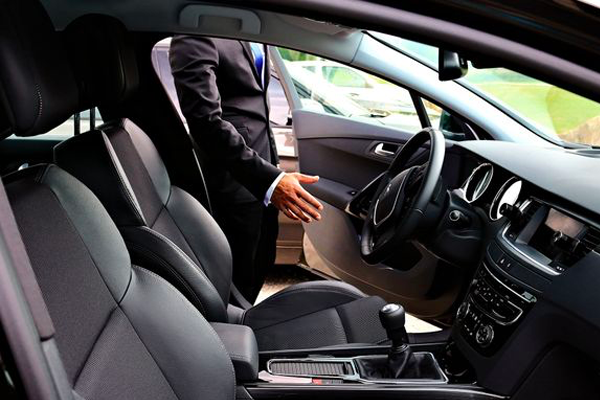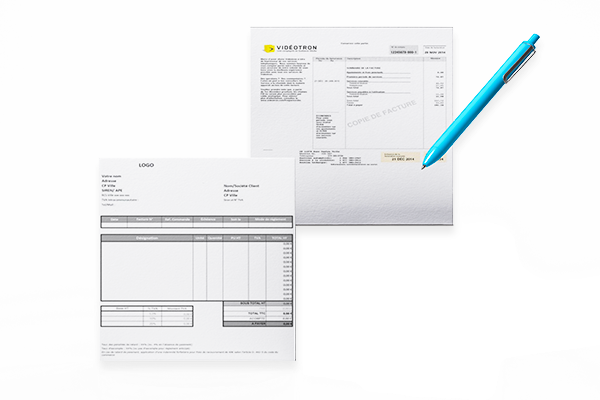Il ne suffit pas d’avoir le permis de conduire et une voiture pour devenir chauffeur VTC et gagner sa vie en conduisant des personnes d’un point A à un point B. Avec l’avènement des plateformes de chauffeurs privés (Uber, etc.), cette activité a été réformée, une première fois par la loi Thévenoud en 2014, puis une seconde fois par la loi Grandguillaume en 2018. Voici toutes les informations à avoir en tête pour se lancer dans l’aventure VTC.

Première étape : devenir chauffeur VTC
La formation VTC et l'examen
Pour devenir chauffeur VTC, il vous faudra d’abord obtenir la carte VTC. Pour cela, vous devrez passer un examen spécifique qui dure 3h50 et comporte 7 épreuves sur : + la réglementation des transports + la sécurité routière + la gestion d'une entreprise + la compréhension du français et de l'anglais + le développement commercial + la règlementation nationale des VTC
L'examen se présente sous la forme d’un QCM (Question à Choix Multiples) et d’un QCR (Questions à Réponses Courtes), selon les épreuves. Il peut se passer en candidat libre. Néanmoins, il est conseillé de suivre une formation dans un centre agréé afin d’être préparé correctement aux différents modules.
À noter : depuis l'entrée en vigueur de la loi Grandguillaume, cet examen ne se passe plus auprès de la Préfecture, mais auprès de la Chambre des Métiers de l'Artisanat (CMA).
Obtenir la carte VTC
Une fois votre examen validé, vous devez demander votre carte professionnelle VTC par écrit à la préfecture de votre département, ou à la préfecture de police si vous résidez à Paris. Votre carte vous sera délivrée sous 3 mois. Attention, pour obtenir votre carte il ne vous suffit pas de valider l’examen de VTC. Il vous faudra également répondre aux conditions suivantes : + être titulaire du permis B depuis plus de 3 ans (ou plus de 2 ans en cas de conduite accompagnée) + avoir suivi l'enseignement de "prévention et secours civiques de niveau 1" (PSC1) au cours des deux dernières années + passer une visite médicale
D’autre part, avant de vous délivrer votre carte professionnelle VTC, la préfecture vérifiera également que vous n'avez pas fait l'objet de certaines condamnations telles que : + la réduction de la moitié des points du permis de conduire + une conduite sans permis + une condamnation à au moins 6 mois de prison
Seconde étape : créer son entreprise
Créer son entreprise de transport
Une fois la carte VTC obtenue, vous devez créer votre entreprise et donc choisir un statut juridique. Libre à vous d’opter pour une entreprise individuelle (microentreprise, EI ou EIRL) ou une société unipersonnelle (SASU, EURL).
Le statut d’autoentrepreneur peut être intéressant au début car il permet de débuter sans trop de contraintes. Cependant, il n’est généralement plus adapté une fois que l’activité s’est développée. En effet, le régime de microentreprise implique une limite de chiffre d’affaires qui peut freiner votre développement. Mais surtout, ce statut ne permet pas de déduire les charges professionnelles du chiffre d’affaires, alors même que celles-ci peuvent être importantes pour un chauffeur VTC (essence, location de la voiture, cotisations sociales, etc.).
Cela explique pourquoi la plupart des chauffeurs privés choisissent un statut de société, le plus souvent une SASU. L’activité de VTC est artisanale. Elle relève donc de la CMA à laquelle vous devrez être également inscrit pour exercer dans les règles.
Obtenir sa licence VTC
Une fois que votre entreprise est créée, vous devez ensuite réaliser la procédure vous permettant d’obtenir votre licence VTC avant de pouvoir démarrer votre activité. Pour cela, il vous suffit de vous inscrire au registre des VTC, par courrier ou en ligne sur le site du Ministère des Transports.
Pour procéder à votre inscription au registre des VTC, vous devrez fournir les éléments suivants : + une attestation de Responsabilité Civile professionnelle (RC Pro) + une copie du justificatif d'immatriculation de l'entreprise (extrait K-Bis pour les sociétés ou avis de situation au répertoire SIRENE pour les autoentrepreneurs) + une copie de la carte grise du véhicule que vous utiliserez pour votre activité + une copie recto verso de votre carte professionnelle VTC + un justificatif de capacité financière de minimum 1 500 €, sauf si vous êtes propriétaire du véhicule ou locataire de longue durée (contrat de location du véhicule de plus de 6 mois). Dans le cas d’une société, un capital social de 1 500 € peut faire office de justificatif de capacité financière.
L’inscription au registre des VTC coûte 170 € et doit être renouvelée tous les 5 ans. Une fois inscrit, il vous faudra environ un mois pour recevoir votre attestation avec votre numéro d'inscription au registre. Vous pourrez alors compléter et imprimer le macaron rouge des chauffeurs VTC, puis l’apposer à l'avant et à l'arrière de votre véhicule avant de lancer votre activité.
Concernant le renouvellement de l’agrément, chaque chauffeur VTC doit suivre tous les 5 ans un stage de formation continue de 14h minimum, dispensé dans un centre de formation agréé.
Pouvez-vous devenir VTC avec un statut de capacitaire de transport ?
Certains chauffeurs ne sont pas inscrits avec le statut de VTC, mais avec celui de capacitaire de transport. Ces deux statuts sont en réalité très différents et ne peuvent légalement pas se substituer l’un à l’autre.
Une attestation de capacitaire de transport permet en effet d’exercer une activité de transport régulier tel que le transport scolaire ainsi que de transport à la demande pour des groupes. Il ne s’agit donc pas de la même activité que celle du chauffeur VTC.
Pour clarifier ce point, la loi Grandguillaume, entrée en vigueur en janvier 2018, interdit l’activité de VTC pour les capacitaires dans les agglomérations de plus de 100 000 habitants et/ou dans des véhicules de moins de 10 places.
Vous avez maintenant toutes les informations pour franchir le pas et devenir chauffeur privé. Sachez enfin que même en autoentreprise, vous avez l’obligation d’ouvrir un compte spécifique pour votre activité de chauffeur VTC. Si vous passez par une plateforme telle qu’Uber et que vous êtes payés par virement de la plateforme, un compte dans une néobanque telle qu’Anytime sera une solution à la fois simple et sûre pour gérer les finances de votre activité








